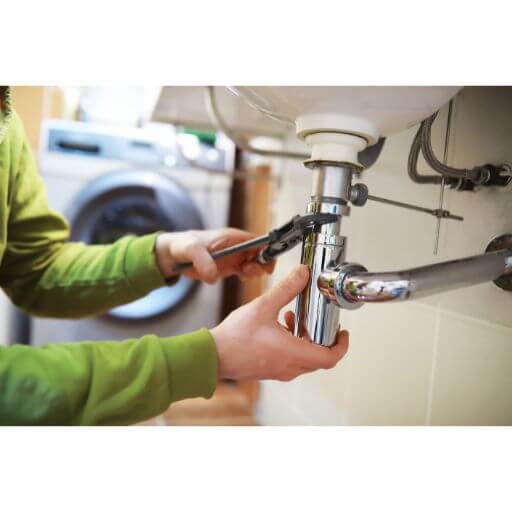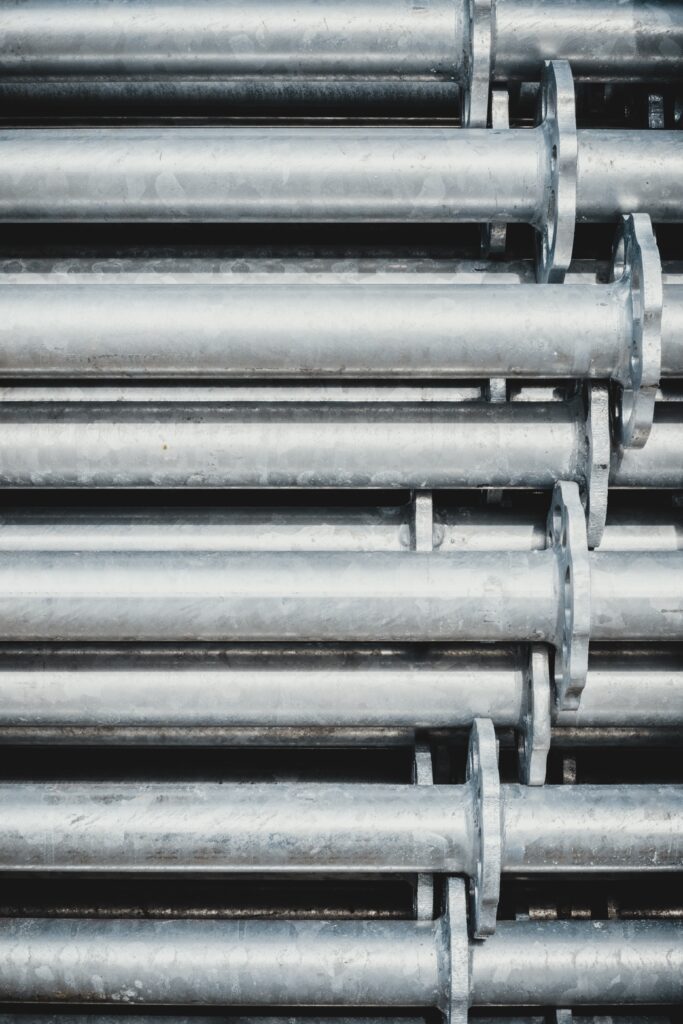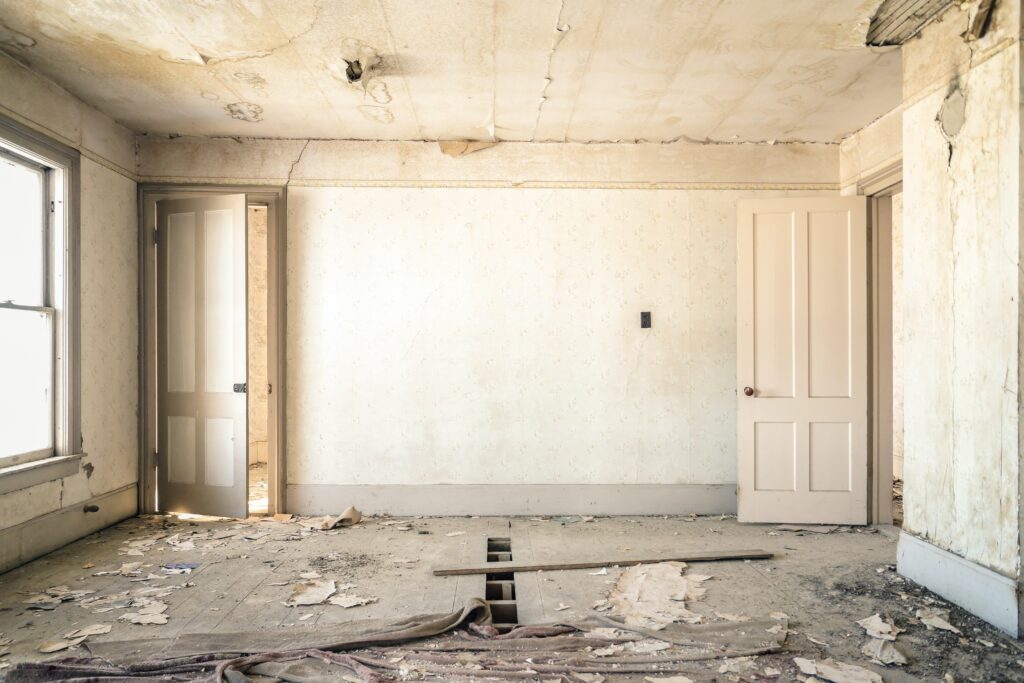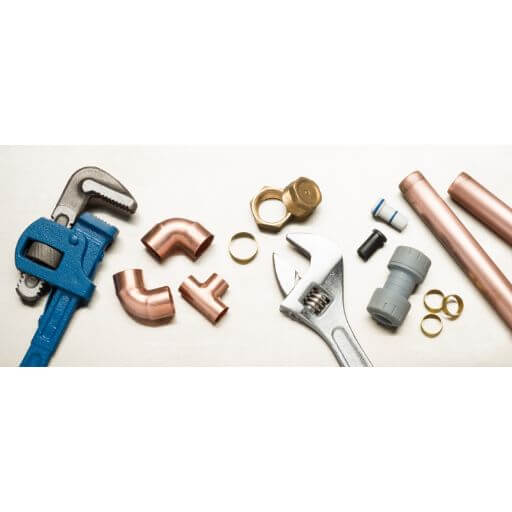
You’re about to discover the essential materials that make up the backbone of plumbing systems. From pipes and fittings to valves and connectors, these vital components play a crucial role in ensuring the smooth functioning of your plumbing infrastructure. So, whether you’re a homeowner looking to tackle a small DIY project or simply curious about the inner workings of your pipes, this article will guide you through the fundamental materials used in plumbing and equip you with the knowledge you need to keep things flowing smoothly in your home. Plumbing is an essential part of any building’s infrastructure, ensuring the supply of water and the efficient removal of waste. To successfully carry out plumbing tasks, one must have a good understanding of the basic materials used in this field. In this comprehensive article, we will delve into the various pipes, fittings, valves, plumbing tools, sealants, supports and anchors, traps, connectors, water supply equipment, and adhesives commonly used in plumbing.
Pipes
Pipes are integral to any plumbing system. They are used to carry water, gas, or waste materials from one location to another. There are several types of pipes available, each with its own set of advantages and applications.
Copper pipes
Copper pipes are one of the most common types of pipes used in plumbing. They are durable, resistant to corrosion, and have excellent heat conductivity properties. Copper pipes come in various sizes and are often used for water supply lines. Their flexibility makes them easy to install in both residential and commercial settings.
Plastic pipes
Plastic pipes, such as PVC (polyvinyl chloride) and CPVC (chlorinated polyvinyl chloride) pipes, are lightweight and affordable options for plumbing systems. They are resistant to corrosion and offer excellent chemical resistance. Plastic pipes are commonly used in both residential and commercial applications for water supply lines, drainage systems, and irrigation.
Steel pipes
Steel pipes are known for their strength and durability. They can withstand high pressure and are commonly used for water and gas transportation in both residential and industrial settings. However, steel pipes are susceptible to corrosion and require regular maintenance to prevent rusting.
Cast iron pipes
Cast iron pipes are traditionally used for sewer and drainage systems. They are incredibly sturdy and can withstand heavy loads and pressures. Cast iron pipes are known for their longevity and superior sound insulation properties. However, they are quite heavy and require professional installation.
Fittings
Fittings are used to connect pipes and other plumbing components, ensuring a secure and leak-free connection. There are various types of fittings available, each serving a specific purpose.
Elbows
Elbows are fittings that allow pipes to change direction. They come in different angles, such as 90 degrees and 45 degrees, and facilitate smooth flow transitions in plumbing systems.
Tees
Tees are fittings that have three openings, with one inlet and two outlets or vice versa. They are commonly used to create a branch or split in the plumbing system, allowing water or other materials to flow in multiple directions.
Couplings
Couplings are fittings used to connect two pipes of the same diameter. They provide a tight and secure joint between pipes, preventing any leaks. Couplings are widely used for repairs and extensions in plumbing systems.
Flanges
Flanges are flat discs with holes in the center. They are used to connect pipes or other fittings by bolting them together. Flanges provide a strong and reliable connection, especially in high-pressure systems.
Adapters
Adapters are fittings used to connect pipes of different materials or sizes. They allow for the seamless transition between two different pipe types, ensuring compatibility and ease of installation.

Valves
Valves are essential components in plumbing systems that control the flow of water or other materials. They allow for the opening and closing of pipes, regulating the supply and preventing backflow.
Gate valves
Gate valves are commonly used in plumbing systems to start or stop the flow of fluid. They have a gate-like mechanism that slides up and down to control the passage of water. Gate valves are known for their full flow capacity but may take longer to fully open or close.
Ball valves
Ball valves are popular due to their ease of use and reliability. They have a spherical ball with a hole through its center, which can be turned to control the flow. Ball valves provide excellent flow control and can be quickly operated with a quarter-turn of the handle.
Check valves
Check valves, also known as non-return valves, are designed to prevent the backflow of water or other fluids in plumbing systems. They allow fluid to flow in only one direction, ensuring that it does not flow back and cause potential damage.
Globe valves
Globe valves are commonly used for throttling or regulating the flow of fluid. They have a disc or plug that moves up and down to control the flow rate. Globe valves provide precise flow control, making them suitable for applications requiring fine-tuning.
Butterfly valves
Butterfly valves have a disc-shaped closure element that rotates around a central axis. They are commonly used for large water systems and can be operated quickly with a quarter-turn of the handle. Butterfly valves provide excellent flow control and low-pressure drops.
Plumbing Tools
Plumbing tools are essential for any plumbing project, whether it’s installation, repair, or maintenance. These tools help plumbers carry out tasks efficiently and effectively.
Pipe wrench
A pipe wrench is a versatile tool that is used for gripping and turning pipes. It has adjustable jaws that lock onto the pipe, allowing for a secure grip. Pipe wrenches come in various sizes and are useful for tightening or loosening pipes and fittings.
Plunger
A plunger is an indispensable tool for clearing clogged drains and toilets. It creates pressure and suction when plunged, dislodging blockages and allowing water to flow freely. Plungers come in different sizes and designs, each suited for specific plumbing fixtures.
Pipe cutter
A pipe cutter is used to cut pipes cleanly and accurately. It has a cutting wheel that scores the pipe’s surface, and a tightening mechanism that steadily applies pressure to cut through the pipe. Pipe cutters come in different types, such as manual and ratcheting, and are available for various pipe materials.
Torch
A torch, specifically a propane torch, is used for soldering copper pipes. It provides the necessary heat to melt solder and create a strong bond between the pipes. Torches are available in different sizes and can be handheld or attached to a gas cylinder for more prolonged use.
Hacksaw
A hacksaw is a versatile cutting tool used for various plumbing applications. It can be used to cut through pipes, brackets, or other metal components. Hacksaws have a replaceable blade that can be adjusted to fit different materials and thicknesses.

Sealants
Sealants are substances used to fill gaps and prevent leaks in plumbing systems. They provide a watertight seal and ensure a secure connection between pipes and fittings.
Pipe dope
Pipe dope, also known as pipe thread compound, is a paste-like substance used to seal threaded connections. It fills gaps and lubricates threads, preventing leaks and providing a reliable seal. Pipe dope is commonly used for metal-to-metal connections.
Teflon tape
Teflon tape, also known as plumber’s tape or thread seal tape, is a thin, white tape used to seal threaded connections. It wraps around the threads, acting as a lubricant and preventing leaks. Teflon tape is commonly used for pipe fittings and other threaded connections.
Plumber’s putty
Plumber’s putty is a soft substance used to create watertight seals around drains, sinks, and faucets. It can be easily molded into shape and provides an effective barrier against leaks. Plumber’s putty is typically used for non-threaded connections.
Thread seal tape
Thread seal tape, also known as PTFE tape, is a thin tape used to seal threaded connections. It wraps around the threads, creating a tight seal and preventing leaks. Thread seal tape is commonly used for pipe fittings, valves, and other threaded connections.
Pipe joint compound
Pipe joint compound, also known as pipe joint sealant, is a paste-like substance used to seal threaded connections. It fills gaps and provides a strong seal against leaks. Pipe joint compound is commonly used for metal-to-metal connections.
Supports and Anchors
Supports and anchors are used to secure and stabilize pipes in plumbing systems. They prevent excessive movement, reduce stress on the pipes, and ensure the longevity of the system.
Pipe hangers
Pipe hangers are devices used to suspend pipes from ceilings or walls. They come in various designs, such as looped straps, brackets, or clamps, and provide support and stability to the pipes. Pipe hangers are essential for preventing sagging or excessive movement of pipes.
Pipe brackets
Pipe brackets are L-shaped metal brackets used to secure pipes to walls or other surfaces. They provide additional support and ensure that the pipes remain in place. Pipe brackets are available in different sizes and can be fastened using screws or bolts.
Pipe clamps
Pipe clamps are devices used to secure pipes onto surfaces, such as walls or beams. They have a hinged design that allows for easy installation and adjustment. Pipe clamps provide firm support and prevent unwanted movement of the pipes.
Pipe straps
Pipe straps are small metal or plastic bands used to secure pipes against surfaces. They are typically fastened with screws or nails and provide a simple and effective method of support. Pipe straps are commonly used for lightweight pipes or in areas where space is limited.

Traps
Traps are fixtures used to prevent the entry of harmful gases or odors into buildings, while still allowing the normal flow of water or waste. They create a barrier of water to trap gases and prevent them from entering the living or working spaces.
P-trap
A P-trap is a common type of trap used in plumbing systems. It has a curved shape resembling the letter “P” and is commonly found under sinks and other fixtures. The water in the trap creates a seal that prevents sewer gases from entering the building.
S-trap
An S-trap, as the name suggests, has a shape resembling the letter “S”. It is less commonly used compared to P-traps but can still be found in older plumbing systems. S-traps function similarly to P-traps, creating a water seal to prevent sewer gases from entering the building.
Bottle trap
A bottle trap is a compact and space-saving trap commonly used in basins or vanity units. It has a cylindrical shape and is often made of plastic. Bottle traps provide an effective seal against sewer gases while offering easy maintenance and access.
Connectors
Connectors are used to join different pipes, fittings, or fixtures together, ensuring a secure and leak-free connection. They come in various types to accommodate different materials and sizes.
Couplings
Couplings, as mentioned earlier in the fittings section, are used to connect two pipes of the same diameter. They provide a tight and secure joint, allowing for a smooth flow of water or other materials.
Nuts and washers
Nuts and washers are commonly used together to secure pipe fittings. The nut is tightened onto the threads, compressing the washer against the fitting or pipe, creating a watertight seal. Nuts and washers are essential for preventing leaks in plumbing systems.
Unions
Unions are fittings that allow for easy disconnection of pipes or fittings. They consist of two identical halves connected by a central nut. Unions are useful for maintenance or repairs, as they allow for the easy removal of sections of the plumbing system without having to disconnect the entire line.
Sleeves
Sleeves are used to join two pipes or fittings together. They usually have a longer length and slide over the end of the pipe or fitting, providing a secure connection. Sleeves can be used to repair damaged or broken pipes or to extend the length of a pipe.
Water Supply Equipment
Water supply equipment is essential for regulating and monitoring the flow, pressure, and quality of water in plumbing systems. It ensures efficient water distribution throughout a building.
Water meters
Water meters are used to measure the amount of water consumed in a plumbing system. They provide accurate readings, allowing for proper billing and monitoring of water usage. Water meters are commonly installed near the main water supply line of a building.
Pressure regulators
Pressure regulators, also known as pressure reducing valves, are used to control the water pressure in plumbing systems. They ensure a consistent and safe pressure throughout the system, preventing potential damage to pipes, fixtures, and appliances.
Backflow preventers
Backflow preventers are devices designed to prevent the contamination of potable water by backflow. They allow water to flow in one direction while preventing the reverse flow, ensuring that contaminated water does not contaminate the clean water supply. Backflow preventers are commonly installed at cross-connections between potable and non-potable water sources.
Adhesives
Adhesives are used to bond pipes, fittings, or other plumbing components together, providing a strong and permanent connection. They create a secure seal and prevent leaks or separation.
PVC solvent cement
PVC solvent cement is specifically designed for bonding PVC pipes and fittings. It softens the pipe surface and fuses it with the fitting, creating a strong and permanent connection. PVC solvent cement is easy to use and provides excellent sealing properties.
Pipe glue
Pipe glue, also known as pipe adhesive, is commonly used for bonding plastic pipes and fittings, such as CPVC pipes. It forms a strong bond when applied to the surfaces of the pipes, ensuring a reliable connection. Pipe glue is available in different types, each suited for specific pipe materials.
CPVC adhesive
CPVC adhesive, as the name suggests, is specifically formulated for bonding CPVC pipes and fittings. It provides a secure and durable connection, ensuring the efficiency and stability of the plumbing system.
In conclusion, plumbing requires a wide range of materials to ensure the smooth operation of water supply and waste management systems. From pipes and fittings to valves and adhesives, each component plays a vital role in maintaining a functional and leak-free plumbing system. By understanding the different materials and their applications, one can successfully undertake plumbing projects with confidence and skill.
